Hyperliquid:
→ Dominating onchain perp volume
→ Miniscule relative to cexes still
Liquidity is there. Performance is ~basically there. So what's stopping the rest of that volume from coming onchain?
Latency. Real-time latency.
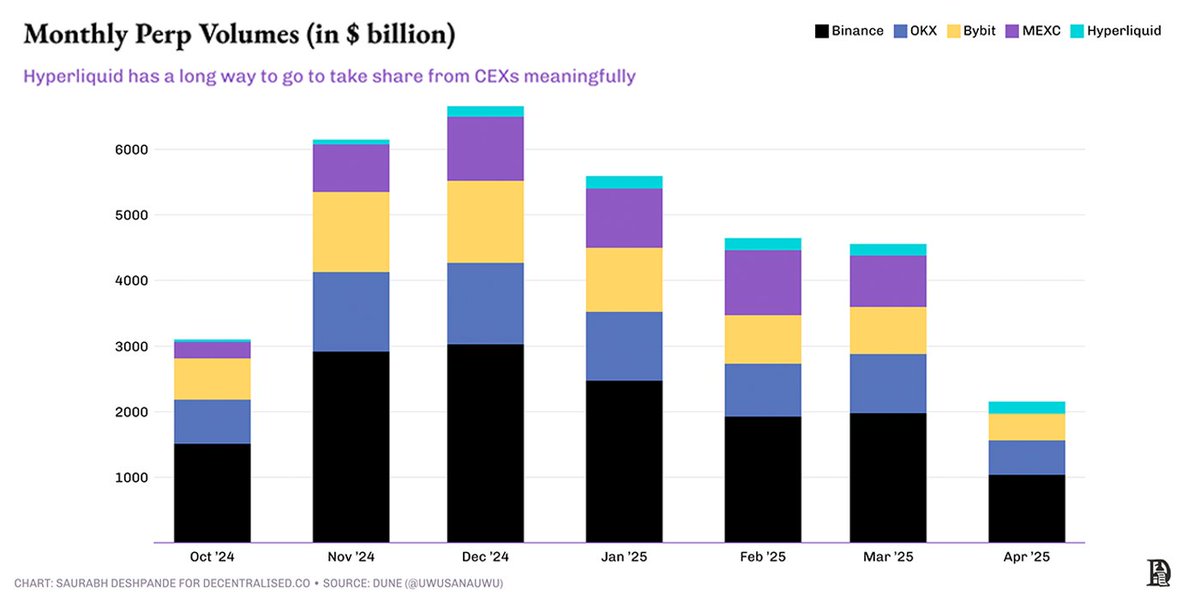
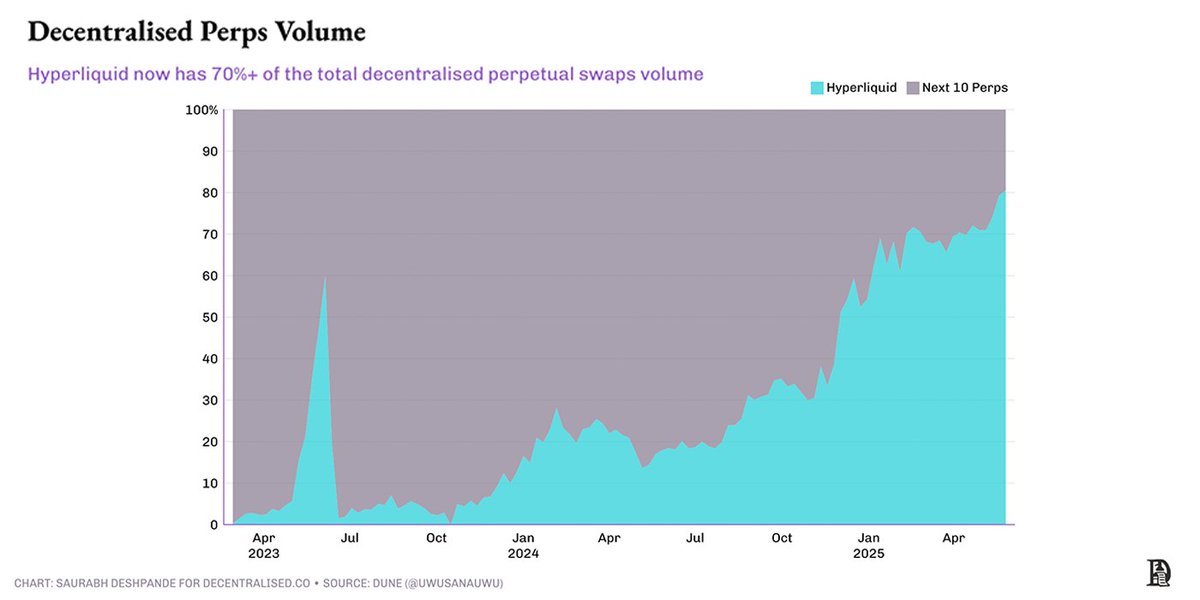
A brief look at the numbers behind @HyperliquidX through the lens of revenue
The volume supported by decentralised perpetual futures products has steadily grown from ~$20 billion a week to over $100 billion in the week of May 19, 2025. Most of this growth originates from Hyperliquid, with its weekly volume closing in on ~$80 billion. Hyperliquid supports more than 75% of the perp DEX volume as of writing.
Here's a different way to think of it. Hyperliquid is the first product in a while that is eating into the market share of entrenched incumbents. Hyperliquid has half of ByBit’s open interest and one-third of Binance’s.
One of Hyperliquid’s key innovations is its HLP (Hyperliquidity Provider) vault. It democratises market-making by allowing any user to provide liquidity via a protocol vault and earns fees from trading and liquidations, which are shared with liquidity providers.
The fee generated by the platform is split between users who provided liquidity to the HLP vault and the Assistance Fund that buys back HYPE tokens. As of May 26, 2025, 23 million+ HYPE worth $877 million have been bought back. And that fee has added up over the past few months.
Hyperliquid currently earns ~$2.5 million in daily revenue, which amounts to ~$900 million annually. The current market cap is at $12.2 billion, making the price-to-revenue multiple 13.3. This is cheaper than other derivatives venues like dYdX and Synthetix. Robinhood, the retail trading platform in the US, trades at a PS (price-to-sales) multiple of 17. Coinbase trades at a PS multiple of ~10.
We did some basic math around how Hyperliquid's product compares against the per businesses of Binance, Bybit and Coinbase internally.
In Q1 of 2025, Binance supported $2 trillion in spot volume and $6 trillion in futures volume. We assume the median spot and futures fees to be 0.05% and 0.028%, respectively. The approximate revenue from spot and futures would be $2.68 billion ($1 billion in spot and $1.68 billion in futures). This puts Binance’s annual run rate at $10.7 billion.
The total market cap of BNB is $100 billion. Not all of Binance’s value is accrued to BNB. Assuming a 1.5 to 3 times premium on the total value of Binance, the price to sales for Binance would be at ~15 and 30. Binance has other sources of revenue that would be difficult to estimate. If Binance is the benchmark, at ~13 P/S multiple, Hyperliquid seems to be fairly valued.
The fixed costs of traditional companies are generally higher than those of blockchain-based companies. This is because blockchain protocols outsource their infrastructure to a distributed network of validators and operate with minimal staff and almost no physical footprint. Their cost-to-income ratios can be an order of magnitude lower than those of traditional financial institutions.
So if Hyperliquid has to handle 10 times more volume or Aave has to support 10 times more TVL, they don’t need to hire more employees or open new branches. Scaling blockchain businesses doesn’t increase their costs proportionally. This means the bottom line of blockchain companies is higher than that of traditional companies.
Thus, if both Robinhood and Hyperliquid were trading at 13X, Hyperliquid would be more attractive because it could pass on more of the revenue towards the token than Robinhood. But note that the HYPE token has unlocks ahead. The calculation is based on circulating supply, and not the FDV.
$HYPE currently trades at a market cap of ~$11 billion with a ~4% market share of the perps market volume. The current P/S multiple is ~13.3.. In 2024, the total perp volume (DEX + CEX) was $60 trillion. We assume a 25% growth for 2025, so the total volume will be $75 trillion. The following table shows the HYPE market cap with different market shares and P/S multiples.
So if HYPE captures 10% of the total perps market, at 12 P/S, the market cap would be $22.5 billion—twice the current market cap.
It has been a while since entrenched incumbents have come to question the way HYPE has managed. The last time such a shift occurred was when OpenSea gave way to Blur. Or when Binance aggregated the market for spot assets during the ICO boom. We see Hyperliquid’s dominant place within the perpetuals market being interesting and continue to keep an eye on the ecosystem there.
If you are a founder building on Hyperliquid, we’d like to speak. Slide into the DMs!
Disclaimer —Dco holds a small position in Hyperliquid within its treasury.
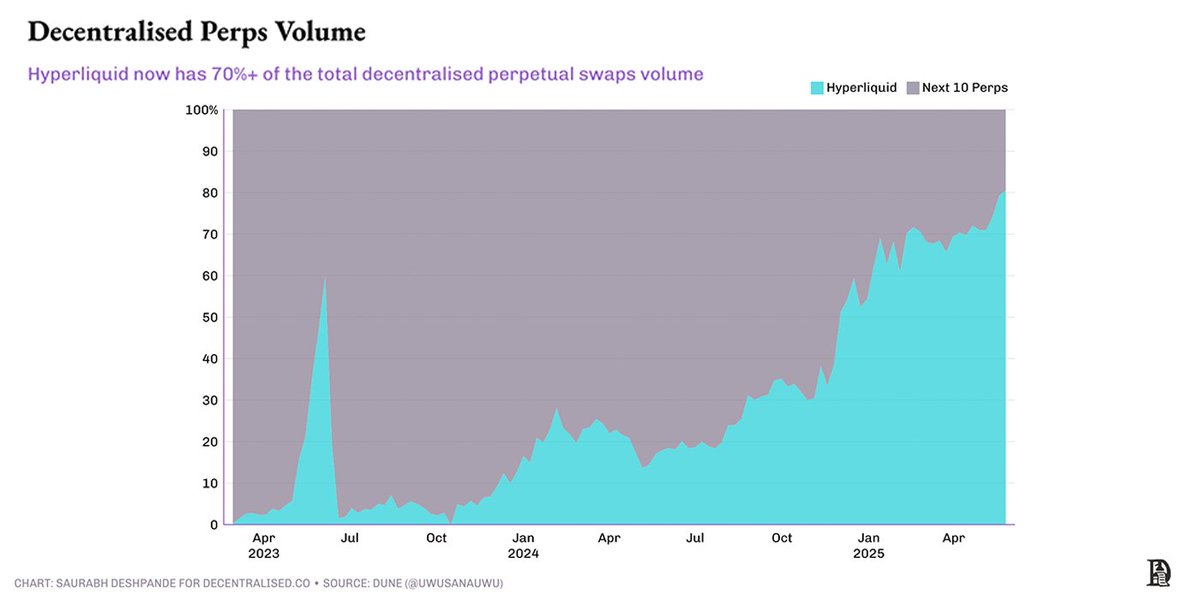
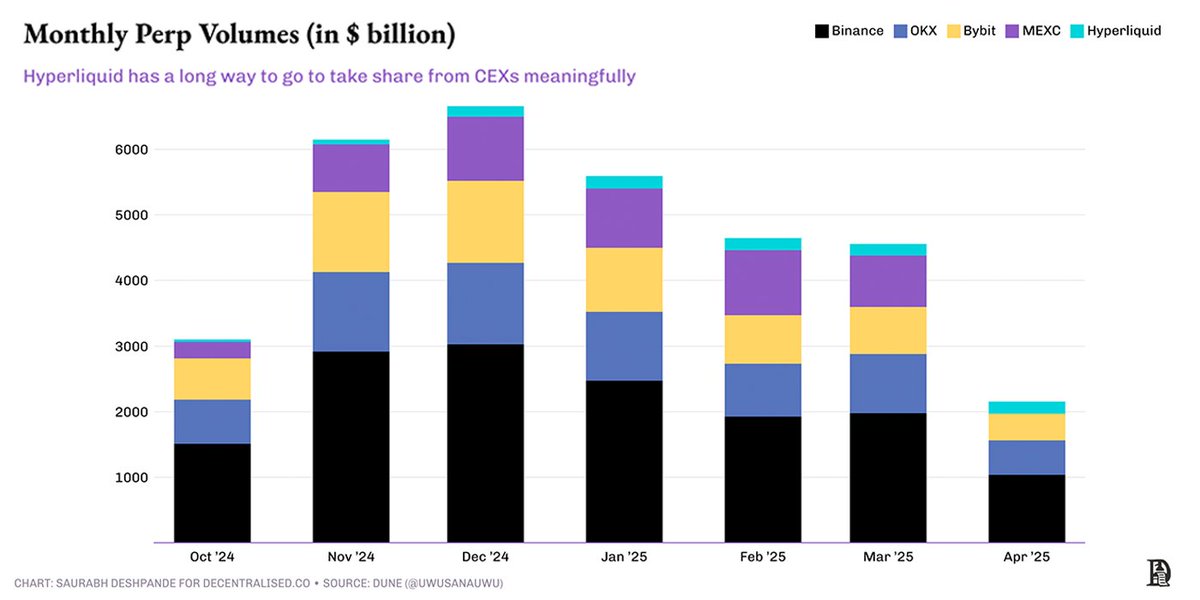
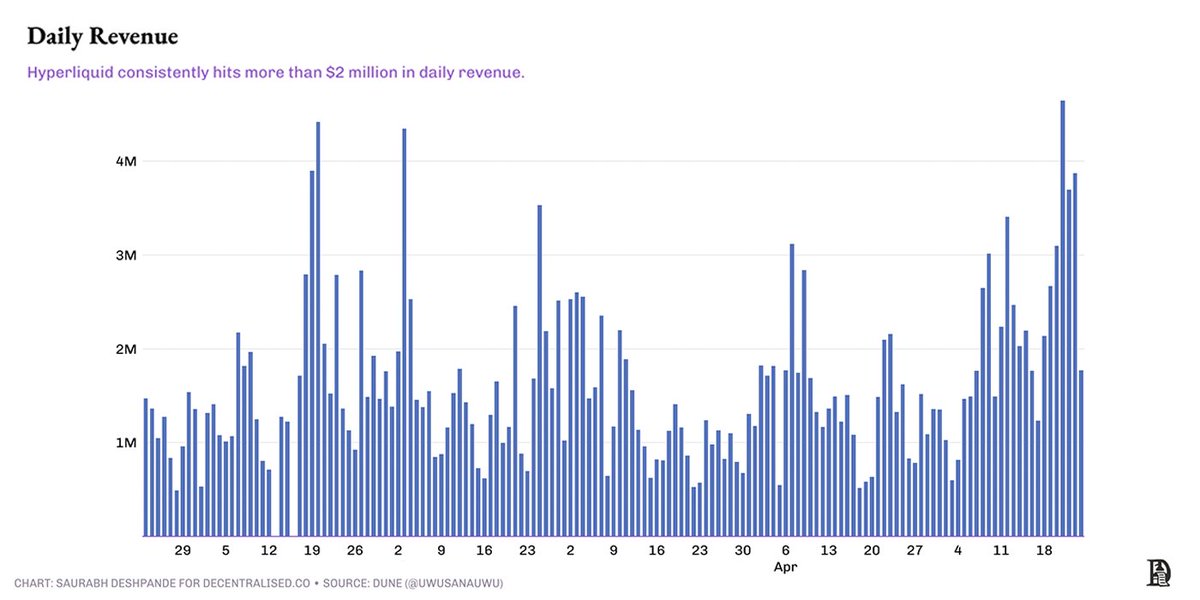
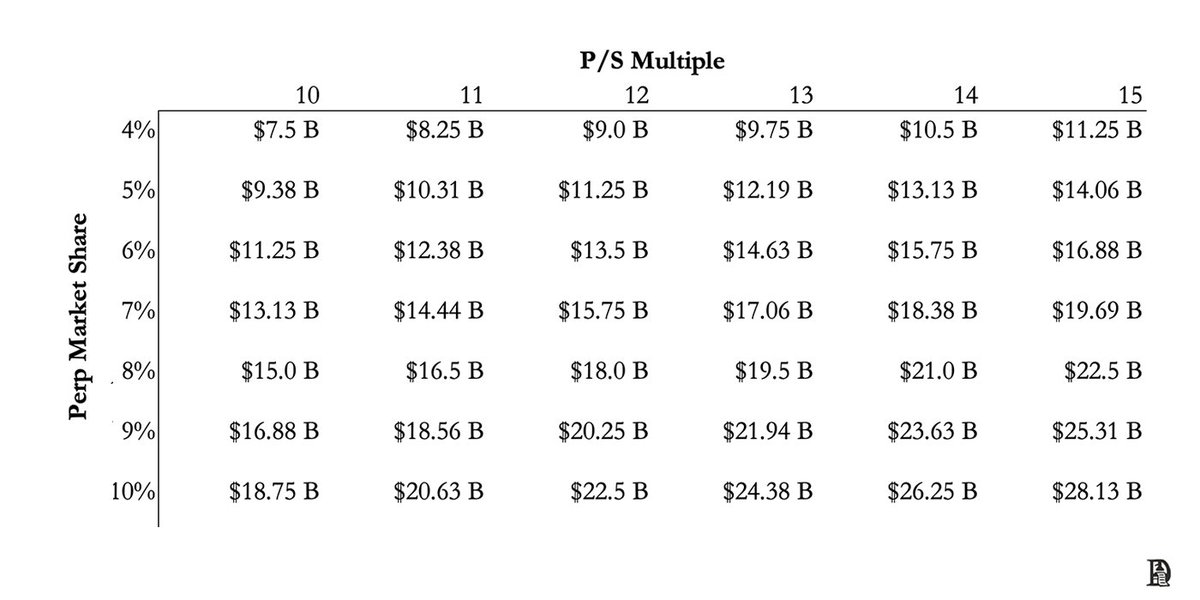
125
90.47K
The content on this page is provided by third parties. Unless otherwise stated, OKX is not the author of the cited article(s) and does not claim any copyright in the materials. The content is provided for informational purposes only and does not represent the views of OKX. It is not intended to be an endorsement of any kind and should not be considered investment advice or a solicitation to buy or sell digital assets. To the extent generative AI is utilized to provide summaries or other information, such AI generated content may be inaccurate or inconsistent. Please read the linked article for more details and information. OKX is not responsible for content hosted on third party sites. Digital asset holdings, including stablecoins and NFTs, involve a high degree of risk and can fluctuate greatly. You should carefully consider whether trading or holding digital assets is suitable for you in light of your financial condition.


